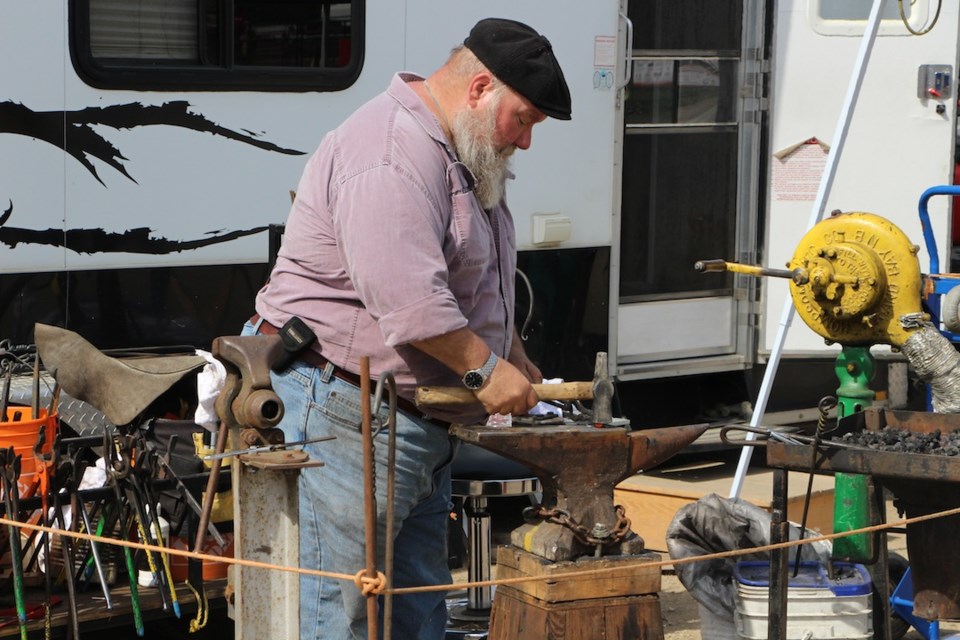The modern Yorkton Exhibition Summer Fair wouldn’t be possible without metal. The rides, the fences, the grandstand, all of it involves metal to some degree, from the smallest nail to the most elaborate ride. The skill and knowledge that comes with working metal all began with the blacksmith, so it’s only appropriate that a blacksmith was at the fair, showing how to make a wide range of things.
Monte Wilkins was on the fair grounds making a wide range of items in a traditional way, using coal, a hand-cranked blower, handle and hammer.
Wilkins said he’s always been interested, ever since he could remember. While he was only six when his grandparents sold the family farm, he said he could still remember the forge he had, and he watched the blacksmiths at the museum.
While always interested, Wilkins said he never had time and money at the same time to take the course offered by the museum, and it wasn’t until his girlfriend at the time gave it to him as a Christmas gift that he had a chance to give it a try.
“I got a phone call one day asking to change my course dates, and that was the first time I knew anything about it. The rest was history.”
He’s been doing it for 23 years now, and said he fell in love with the art ever since. He made nails, fire pokers, decorative leaves and other objects over the week.
“Anything most people want to see, I will attempt to make it for them. If I have never made it before, I’ll attempt. If I’ve made it before, no problem, I’ll make it again.”
There’s a growing interest in the art, Wilkins said, with over 600 people on the waiting list for the course through the WDM in Saskatoon. There are also private courses available, including one offered by Wilkins. He said that people interested are getting younger as well, with more people in the 25-35 year old age bracket looking to take courses, with more women interested as well.
“It has diversified a lot in what people think about what blacksmithing is. It’s not just tools and that anymore, anything that can be done with metal, people are finding out that they can do it.”
The fair brings with it some challenges when blacksmithing. The sun makes it hard to see temperatures, and the colours in the metal or the fire. You could burn it or work it too cold, but he said you can feel the temperature with enough experience.
“It’s something that comes with experience.”
He said it can be slower than what people expect, and people need to understand that moving metal takes multiple hammer blows and it’s not a 30 second job.
The length of a demonstration means that it’s an opportunity to teach, Wilkins said, and he and other demonstrators relish questions.
“I love lots of questions, I like people asking them, I want to give as much information as I can. Not just about what would have been done on the prairies here but also a little history of blacksmithing throughout the ages for people, so they get an understanding on how blacksmithing has developed through the ages. At one point in time steel was so hard to make that it became more valuable than gold. People have a little difficulty understanding that until you describe the processes to make steel. Iron was easily made, but steel wasn’t. The process to make steel was so precious, gold could be found fairly easily but steel wasn’t so easily made.”
While the processes of making steel has become more refined, he said that the processes used began with blacksmiths. And through the demonstration, he hopes people who took the time to watch learned a bit more about the history of blacksmithing.




